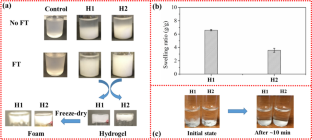2023-10-17 カリフォルニア大学リバーサイド校(UCR)
◆植物のストレス下での生理状態を評価し、地元の絶滅にどれだけ近いかを示すことができ、保護資金の効果的な利用を可能にします。しかし、ほとんどの植物種には臨界限がまだ存在せず、約700,000種のうち約1,000種しか知られていません。植物は一時的に限界を超えることができますが、長期のストレスは致命的であるため、早期警告サインを見つけることが重要です。この研究は、植物の保護において植物生理学者、保全生物学者、土地管理者の協力が不可欠であることを強調しています。
<関連情報>
- https://news.ucr.edu/articles/2023/10/17/how-help-save-plants-extinction
- https://academic.oup.com/conphys/article/11/1/coad073/7271765?searchresult=1&login=false
保全の成果を最適化する植物生理学的指標 Plant physiological indicators for optimizing conservation outcomes
Leonie Schönbeck, Marc Arteaga, Humera Mirza, Mitchell Coleman, Denise Mitchell, Xinyi Huang, Haile Ortiz, Louis S Santiago
Conservation Physiology Published:12 September 2023
DOI:https://doi.org/10.1093/conphys/coad073

Abstract
Plant species of concern often occupy narrow habitat ranges, making climate change an outsized potential threat to their conservation and restoration. Understanding the physiological status of a species during stress has the potential to elucidate current risk and provide an outlook on population maintenance. However, the physiological status of a plant can be difficult to interpret without a reference point, such as the capacity to tolerate stress before loss of function, or mortality. We address the application of plant physiology to conservation biology by distinguishing between two physiological approaches that together determine plant status in relation to environmental conditions and evaluate the capacity to avoid stress-induced loss of function. Plant physiological status indices, such as instantaneous rates of photosynthetic gas exchange, describe the level of physiological activity in the plant and are indicative of physiological health. When such measurements are combined with a reference point that reflects the maximum value or environmental limits of a parameter, such as the temperature at which photosynthesis begins to decline due to high temperature stress, we can better diagnose the proximity to potentially damaging thresholds. Here, we review a collection of useful plant status and reference point measurements related to photosynthesis, water relations and mineral nutrition, which can contribute to plant conservation physiology. We propose that these measurements can serve as important additional information to more commonly used phenological and morphological parameters, as the proposed parameters will reveal early warning signals before they are visible. We discuss their implications in the context of changing temperature, water and nutrient supply.


